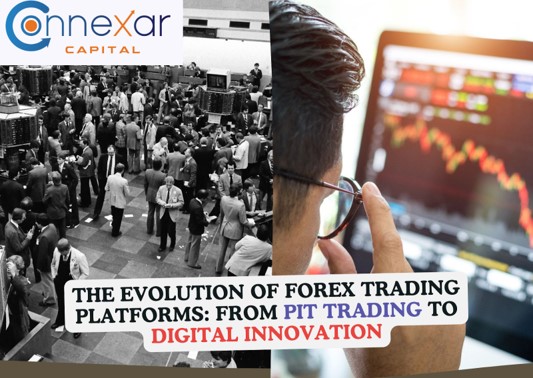
Introduction:
The world of forex trading has undergone a remarkable transformation over the years, evolving from the chaotic hustle of pit trading to the seamless digital experience we know today. In this blog post, we will embark on a journey through time, exploring the fascinating evolution of forex trading platforms. Join us as we unravel the milestones, innovations, and technological advancements that have shaped the way traders buy and sell currencies on the foreign exchange market.
1. The Early Days: Pit Trading and Telephone Deals
In the early 20th century, forex trading primarily took place in physical locations called trading pits. Traders gathered to exchange currencies, shouting and using hand signals to communicate buy and sell orders. The process was chaotic and highly manual. Later, telephone trading emerged, allowing traders to conduct deals via phone calls, bringing a semblance of order to the trading process.
2. The Digital Revolution: Rise of Electronic Trading Platforms
The 1970s witnessed a significant shift with the introduction of electronic trading platforms. These platforms digitized the trading process, enabling traders to execute orders electronically. The Reuters Dealing System, launched in 1973, was one of the pioneering platforms that laid the foundation for modern electronic trading.
3. Internet Era: Online Forex Brokers and Retail Trading
The advent of the internet in the 1990s revolutionized forex trading. Online forex brokers started offering retail traders direct access to the interbank forex market through electronic trading platforms. This accessibility opened up the world of forex trading to individual investors, democratizing the market.
4. MetaTrader Era: User-Friendly and Feature-Rich Platforms
In the early 2000s, MetaTrader emerged as a game-changer in the forex industry. MetaTrader 4 (MT4), released in 2005, and its successor MetaTrader 5 (MT5) provided user-friendly interfaces, advanced charting tools, and automated trading capabilities through Expert Advisors (EAs). These platforms became immensely popular among retail traders and brokers alike.
5. Mobile Trading: Forex at Your Fingertips
With the proliferation of smartphones, mobile trading apps became the next frontier. Brokers developed intuitive mobile platforms, allowing traders to execute trades, analyze charts, and manage their accounts on the go. Mobile trading apps brought unprecedented flexibility to traders' lifestyles, enabling them to stay connected to the forex market 24/7.
6. Cutting-Edge Innovations: AI, Machine Learning, and Blockchain
In recent years, the integration of artificial intelligence (AI) and machine learning algorithms has enhanced trading platforms. These technologies provide traders with predictive analytics, sentiment analysis, and algorithmic trading strategies, empowering them to make data-driven decisions.
Additionally, blockchain technology has started to impact the forex industry, offering transparent and secure transaction processes. Some platforms are exploring the implementation of blockchain for trade settlements and payment processing, promising enhanced security and efficiency.
Conclusion:
The evolution of forex trading platforms from pit trading to the digital age represents a remarkable journey of innovation and progress. Today, traders benefit from user-friendly interfaces, advanced analytical tools, and seamless connectivity, thanks to the continuous advancements in technology. As we look ahead, the forex industry is poised for further transformations, with emerging technologies like AI, machine learning, and blockchain reshaping the landscape. Embracing these innovations, traders and brokers alike are poised to navigate the future of forex trading with confidence and efficiency.
Join us as we continue to explore the exciting developments in the world of forex trading, where tradition meets technology, and opportunities abound for traders worldwide. Happy trading!